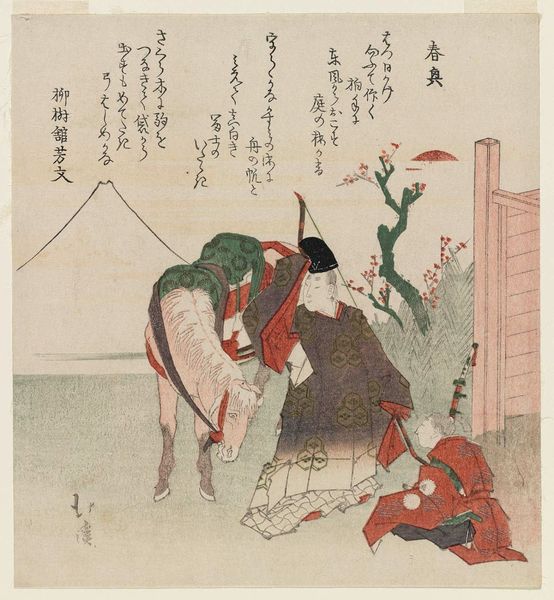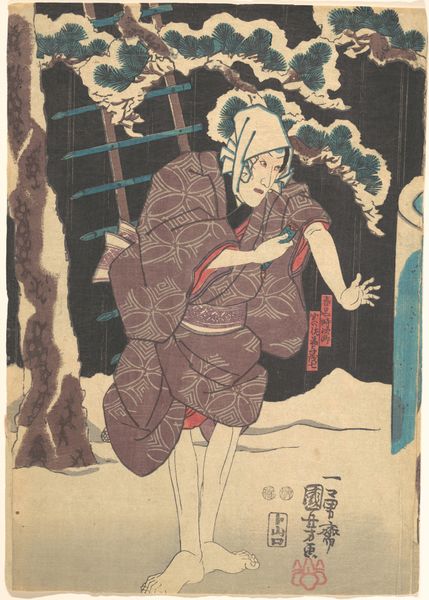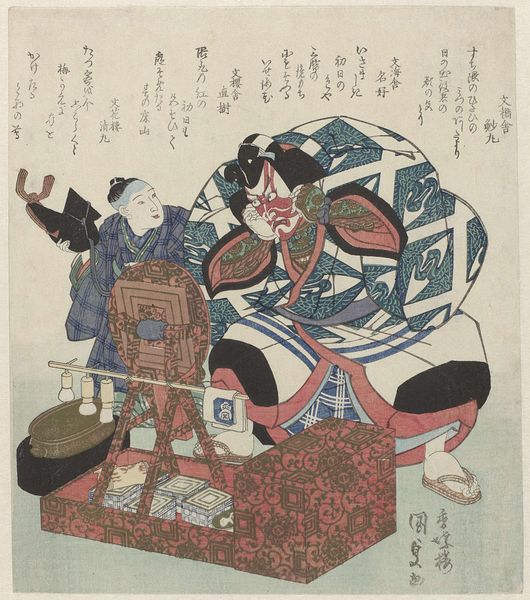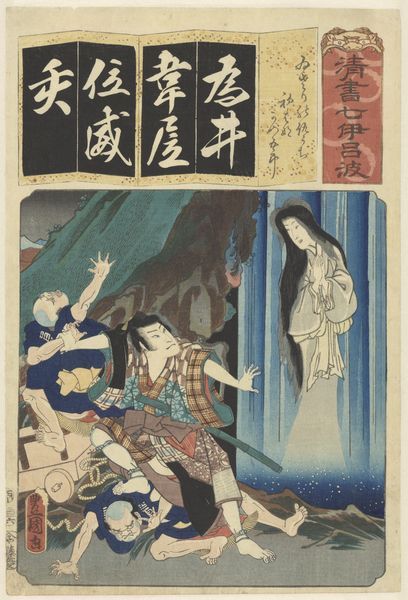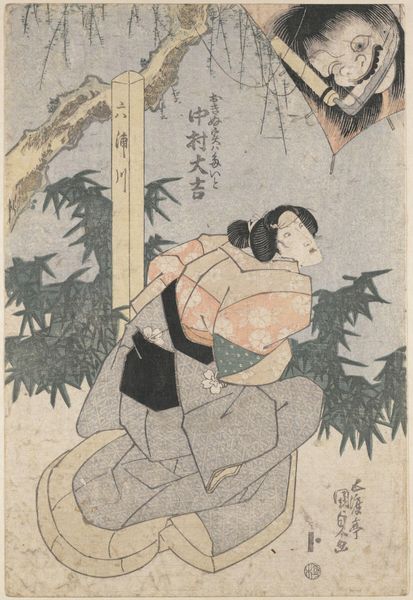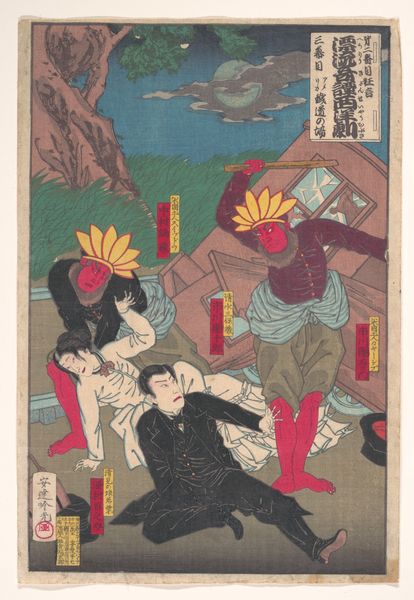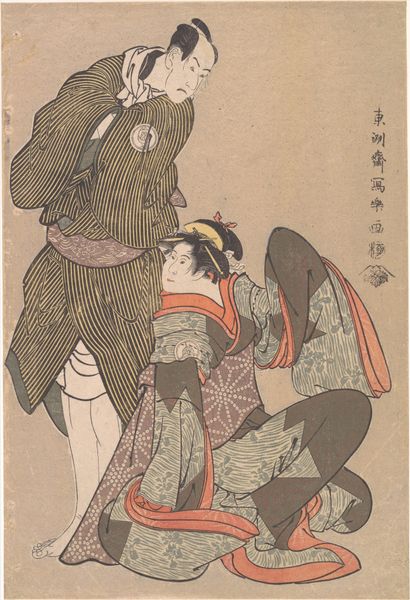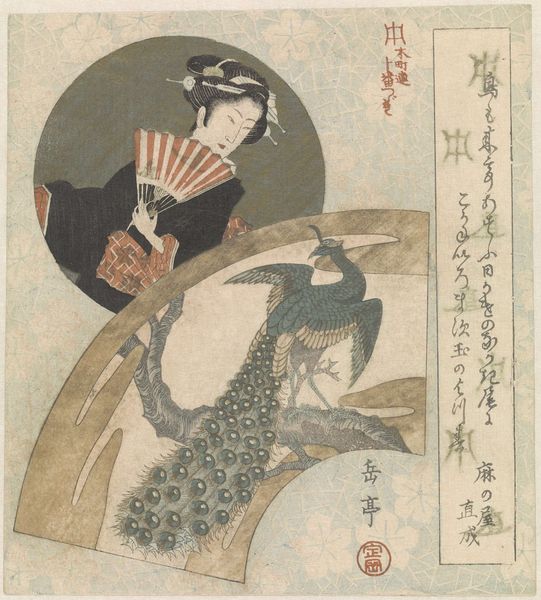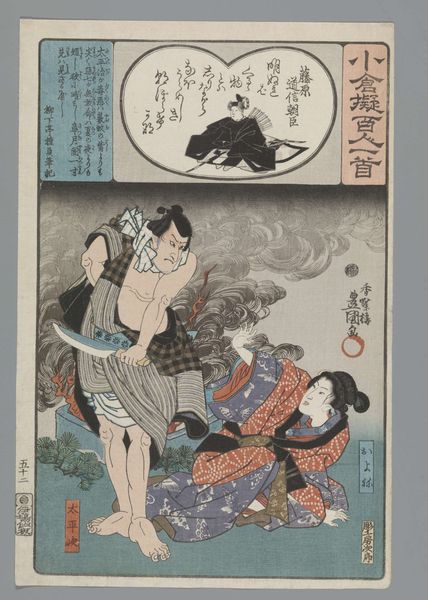
print, woodblock-print
# print
#
asian-art
#
landscape
#
ukiyo-e
#
figuration
#
woodblock-print
Dimensions: height 210 mm, width 184 mm
Copyright: Rijks Museum: Open Domain
Curator: This woodblock print, made around 1825 by Totoya Hokkei, is called "Hout: Rôchishin ontwortelt een boom," which translates to "Wood: Rōchishin Uproots a Tree." It’s part of the collection here at the Rijksmuseum. Editor: My initial impression is one of striking physicality. The almost caricatured form of the figure straining against the tree—it’s dynamic and bold. Curator: It depicts the fictional character Rōchishin from the famous Chinese novel *Shui Hu Zhuan,* or *Water Margin*. These stories were hugely popular in Japan. He’s a strongman known for his incredible strength. Note the detail in the figure—especially his feet. Editor: Indeed, the attention to form is fascinating, isn’t it? Hokkei uses line and the limited color palette typical of ukiyo-e to create a real sense of volume. Observe how he depicts the texture of the tree bark with such simple hatching. But consider how this heroic story resonated within the specific historical moment in Japan. Was this a piece to create folk-hero status? Curator: The Water Margin tales were incredibly influential. They spoke to a kind of righteous rebellion against corrupt authority, something that certainly resonated with the populace and social and political upheaval. Ukiyo-e prints like this one became very effective channels. Editor: Right, we often read Ukiyo-e art merely as decorative, but this highlights how profoundly connected they were to cultural shifts and ideological inclinations. Note that the hero depicted is not alone; the texts placed with this ukiyo-e artwork serve an added social component to understanding this image. I wonder what specific symbolic weight the image of uprooting a tree would have carried at the time? Curator: Perhaps it represented the overturning of established structures, a visual metaphor for societal change. That would explain why it held an influence on the audience who acquired these prints. I find Hokkei's work important when viewed in terms of print dissemination for political leverage. Editor: So, while I was initially struck by the sheer visuality of it, your points underline the work's connection to a powerful cultural narrative. Now I'm eager to explore more of Hokkei's art! Curator: Precisely. It allows us to look at Japanese art through a richer lens.
Comments
No comments
Be the first to comment and join the conversation on the ultimate creative platform.
